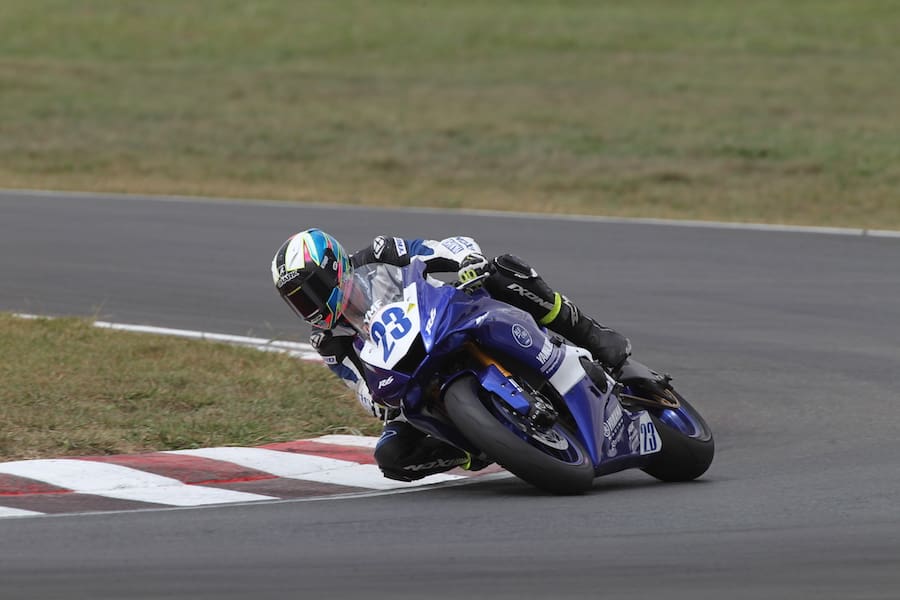The lower top speeds gave me more time to think my way around a track
After pole position and three wins at the South Australian round of the ASBK Supersport championship held at The Bend Motorsport Park, I’m feeling pretty good (Cru is 12 points ahead of nearest challenger Kawasaki’s Tom Toparis).
The times I set at The Bend, which were fast enough to have me in the top 10 of the Superbike class, seemed to have got a lot of people talking about my move to the Supersport class and asking a few questions.
I got the call from Yamaha just two weeks before the first round of the Australian Superbike Championship, which was the support event to Phillip Island’s World Supers. Initially they were going to hold off racing the 2018 YZF-R6 until factory parts were available from Europe, but Yamaha decided it needed to get out there quickly to promote the new 2018 model.
So we ran the bike pretty much standard and I was more than happy to finish second overall against some hungry young riders on some well set-up machinery.
Yamaha’s ECU and suspension upgrades arrived in time for the series’ official test at Wakefield Park in Goulburn, NSW, on 7 March and the season really started for me then.
The work Yamaha and I did at the test was reflected in my two wins there at the actual ASBK round a couple of weeks later. I felt comfortable on the bike and being part of the official factory team again.
People ask me what it’s like jumping off a Superbike after years of championship racing.
It is a huge change going from a 200kg/200hp (150kW) Superbike to a 160kg/120hp (90kW) Supersport bike. On a Superbike you have a split-second to react whereas on the Supersport everything from acceleration to braking happens that much slower.
That’s not to say current 600cc Supersport bikes are slow. They have the same level of performance as a decade-old Superbike and that’s an indication of the technology that’s since gone into them.

Three big changes for me are that I can use the throttle like a light switch as the Supersport doesn’t have the skittishness of a Superbike. Secondly, the lower top speeds give me more time to think my way around a racetrack, and finally, the Supersport carries so much mid-corner speed you find you can open up your racing lines.
All this came together for me at The Bend, which is 500m longer than Phillip Island but has six more corners. Confidence in the 2018 Yamaha YZF-R6 and the ability to build momentum brought me times that would have been competitive in the Superbike class. And that’s a good feeling, especially on a track with a main straight as long as Phillip Island.
Being a factory Yamaha team member again means now I only have to think about working on my riding. Because racing as a privateer means you are also concentrating on how you are going to afford the next round.
I’ve raced with Yamaha since 2012 and, even when I ran as a privateer last year, I still got backing from them as they have a great contingency plan for non-factory riders. They have been the mainstay of my career.

By Cru Halliday
As appeared in AMCN mag Vol 67 No 25